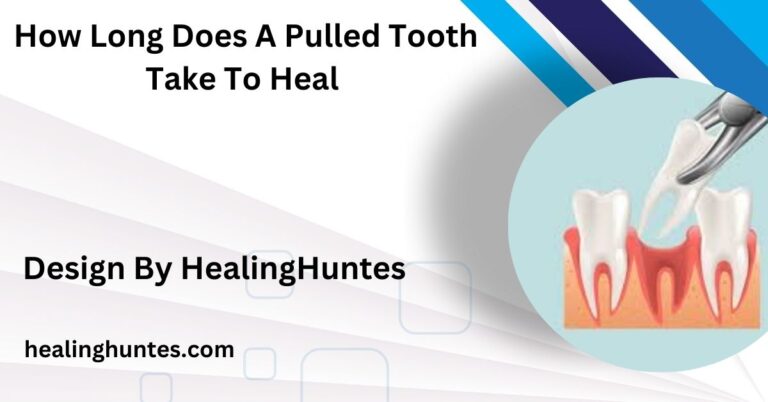When Was Intrinsic Self Healing Invented – A Deep Dive Into Science!
Intrinsic self-healing materials were invented in 2001, enabling materials to autonomously repair themselves and extending their lifespan in various industries.
In this article, we’ll explore the history and development of intrinsic self-healing materials, understand how they work, and examine the key milestones in their invention.
The Early Concept of Self-Healing:

The concept of self-healing has long fascinated scientists and researchers. The idea of materials that could repair themselves was first theorized in the 20th century, with early discussions emerging around the 1950s. However, it wasn’t until the late 20th and early 21st centuries that advancements in chemistry, material science, and nanotechnology made it possible to develop materials capable of repairing themselves after damage.
Early experiments with self-healing polymers marked the beginning of this fascinating journey. These materials were initially limited in scope, but they laid the foundation for more advanced research.
The Invention of Intrinsic Self-Healing Materials:
Intrinsic self-healing materials, which are materials that have the ability to autonomously repair themselves from damage, were invented in the late 1990s. The term “intrinsic” refers to the self-healing properties being built directly into the material, as opposed to external agents that need to be applied to the damage.
The major breakthrough came in 2001 when researchers at the University of Illinois, led by Professor Scott White, developed the first self-healing polymer system. This system involved microcapsules filled with healing agents embedded within the polymer matrix.
This early success demonstrated that self-healing materials could repair cracks and extend the lifespan of products, opening doors to various applications in engineering and manufacturing.
Also Read: What Do Fighters Use to Repair Healing – A Complete Guide!
Key Milestones in Intrinsic Self-Healing:
The invention of intrinsic self-healing materials saw its first major breakthrough in 2001 with the development of a polymer system that used microcapsules filled with healing agents. In 2005, self-healing concrete was introduced, and by 2011, supramolecular polymers enabled materials to self-repair without external agents. The 2020s marked advancements in nanotechnology and biomimicry, pushing self-healing materials into applications like flexible electronics and medical devices.
2001:
University of Illinois Breakthrough The first major breakthrough in intrinsic self-healing materials occurred in 2001 when Professor Scott White and his team introduced a self-healing polymer system that relied on microcapsules filled with healing agents. This development sparked worldwide interest in the potential of self-healing materials.
2005:
Development of Self-Healing Concrete In 2005, researchers extended the self-healing concept to concrete, one of the most widely used construction materials. Self-healing concrete was designed to repair cracks by using bacteria or other agents that produce calcium carbonate to fill the cracks. This innovation proved vital for the construction industry, potentially reducing maintenance costs and extending the lifespan of structures.
2011:
Supramolecular Polymers In 2011, scientists made significant progress in the field of intrinsic self-healing with the development of supramolecular polymers. These materials could self-repair without external intervention by using reversible bonds between molecules. This innovation showed that even without capsules or external agents, materials could restore themselves.
2015:
Self-Healing Electronics The field of electronics greatly benefited from intrinsic self-healing technologies. In 2015, researchers developed electronic circuits that could repair themselves after being damaged. This was particularly significant for consumer electronics, where wear and tear is a common issue. By creating self-repairing circuits, devices could last longer and be more reliable.
2020s:
Nanotechnology and Biomimicry The 2020s saw a surge in the use of nanotechnology and biomimicry to advance intrinsic self-healing materials. By mimicking natural processes, such as the way human skin heals or how plants respond to injury, scientists developed more efficient and resilient self-healing materials. These new materials found applications in areas such as artificial tissues, flexible electronics, and smart coatings.
How Intrinsic Self-Healing Works:

Intrinsic self-healing materials work by incorporating healing agents directly into the material itself. When damage occurs, these agents are automatically triggered, initiating a healing process. The mechanism behind this self-healing process varies depending on the material, but it generally falls into a few categories:
- Capsule-Based Healing: One of the earliest methods involves embedding microcapsules filled with a healing agent in the material. When the material cracks or is damaged, the capsules break, releasing the healing agent that fills the crack and restores the material.
- Reversible Chemical Bonds: Some self-healing materials use reversible chemical bonds that can break and reform. This allows the material to “heal” itself when it experiences mechanical stress or damage. Supramolecular polymers are an example of materials that use this mechanism.
- Shape Memory Materials: Shape memory materials are designed to return to their original form after being deformed. This is another approach to intrinsic self-healing, where the material’s structure can restore itself without needing external intervention.
- Biological Mechanisms: Researchers have also developed bio-inspired materials that mimic how living organisms heal. For instance, some materials can respond to environmental cues such as heat, moisture, or light to trigger a healing response.
Applications of Intrinsic Self-Healing Materials:
The invention of intrinsic self-healing materials has led to their application in a variety of industries. Some of the most notable uses include:
- Aerospace: Self-healing materials can significantly enhance the safety and durability of aerospace components, reducing maintenance and repair costs. These materials help aircraft withstand wear and tear and provide an additional layer of safety.
- Construction: Self-healing concrete and coatings can extend the lifespan of buildings, bridges, and roads, lowering maintenance costs and improving structural integrity.
- Consumer Electronics: In consumer electronics, intrinsic self-healing materials are used to make devices more durable. Self-repairing circuits and coatings can extend the life of smartphones, laptops, and wearable devices.
- Medical Devices: The healthcare industry benefits from self-healing materials in the development of flexible, long-lasting medical devices. Intrinsic self-healing materials are being explored for use in artificial tissues, implants, and prosthetics.
- Energy Storage: Self-healing materials have potential applications in energy storage, where they could improve the lifespan and reliability of batteries and other storage devices.
Also Read: Do Steroids Increase Growth Hormone Help Heal Labrums Post Surgery – A Complete Guide!
Future of Intrinsic Self-Healing Materials:
The future of intrinsic self-healing materials looks promising, with continuous advancements in nanotechnology and biomimicry. Researchers are working on creating materials that can not only heal but also adapt to their environment and regenerate after repeated damage.
FAQ’s
1. When was intrinsic self-healing invented?
Intrinsic self-healing materials were first developed in 2001 at the University of Illinois.
2. How do intrinsic self-healing materials work?
They work by incorporating healing agents or reversible bonds that activate to repair damage automatically.
3. What are the applications of intrinsic self-healing materials?
Applications include aerospace, construction, consumer electronics, medical devices, and energy storage.
4. What was the first breakthrough in intrinsic self-healing?
The first major breakthrough was in 2001 with the creation of a self-healing polymer system using microcapsules.
5. What is the future of intrinsic self-healing materials?
The future holds advancements in nanotechnology and biomimicry, enabling materials to adapt and regenerate after repeated damage.
Conclusion
The invention of intrinsic self-healing materials marked a significant leap forward in material science, with the first breakthrough occurring in 2001 at the University of Illinois. Since then, these materials have evolved, finding applications in aerospace, construction, electronics, and healthcare. With ongoing research and technological advancements, intrinsic self-healing materials are set to play a crucial role in shaping the future of industries worldwide.






